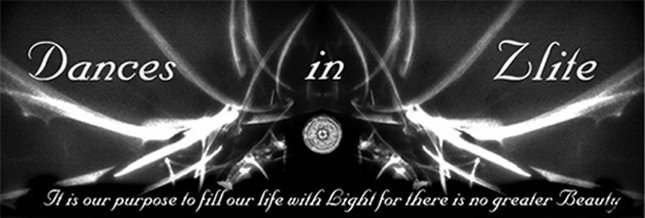
ManDala
Mandala (Sanskrit "essence", "having" or "containing"). It is also translated as "circle-circumference" or "completion", both derived from the Tibetan term dkyil khor. Mandala is of Hindu origin, the term being used for the books of the Rig Veda, but is also used in other Indian religions such as Buddhism. In the Tibetan branch of Vajrayana Buddhism, mandalas have been developed into sandpainting. They are also a key part of anuttarayoga tantra meditation practices.

ManDala1
In various spiritual traditions, mandalas may be employed for focusing attention of aspirants and adepts; as a spiritual teaching tool; for establishing a sacred space; and as an aid to meditation and trance induction.

ManDala2
Its symbolic nature can help one to access progressively deeper levels of the unconscious, ultimately assisting the meditator to experience a mystical sense of oneness with the ultimate unity from which the cosmos in all its manifold forms arises.

ManDala3
The psychoanalyst Carl Jung saw the mandala as "a representation of the unconscious self," and believed his paintings of mandalas enabled him to identify emotional disorders and work towards wholeness in personality.

ManDala4
In common use, mandala has become a generic term for any plan, chart or geometric pattern that represents the cosmos metaphysically or symbolically, a microcosm of the Universe from the human perspective.

ManDala5
A kyil khor (Tibetan for mandala) in Vajrayana Buddhism usually depicts a landscape of the Buddha land or the enlightened vision of a Buddha (which are inevitably identified with and represent the nature of experience and the intricacies of both the enlightened and confused mind): a microcosm representing various divine powers at work in the universe.

ManDala6
Mandalas are commonly used by tantric Buddhists as an aid to meditation. More specifically, a Buddhist mandala is envisaged as a "sacred space," a Pure Buddha Realm and also as an abode of fully realized beings or deities.

ManDala7
The mandala is also a support for the meditating person, something to be repeatedly contemplated, to the point of saturation, such that the image of the mandala becomes fully internalised in even the minutest detail and which can then be summoned and contemplated at will as a clear and vivid visualized image.

ManDala8
In the West, mandala is also used to refer to the "personal world" in which one lives, the various elements of the mandala or the activities and interests in which one engages, the most important being at the centre of the mandala and the least important at the periphery. Depicting one's personal mandala in pictorial form can give one a good indication of the state of one's spiritual life.

ManDala9
The centre of the Mandala is the ultimate divine principle uniting the object and the subject as they spin out of the centre.

ManDala10
Mandala is the essential plan of the universe, balancing the centrifugal and centripetal forces, combining the beginning and end, a symbol of wholeness or poornata. Its centre is unity, equidistant from every point on the circumference of the outer circles, signifying the unity that exists between all phenomena and experience. The centre point represents the divine, surrounded by potent concentric circles. It is a compact mystical diagram, concentrating spiritual energy at the centre.

ManDala11
In Tantra, the Mandala serves as an external support for meditation. It helps to provide the right feelings and visions by which one can arrive at a sense of unity within oneself and the universe outside. The most concentrated point of the universe, and the goal of the individual, is the Bindu, the irreducible point from which everything moves outwards, and towards which everything is directed. The Bindu has no beginning or end, is neither positive nor negative. It also suggests the waves of vibration emanating from the centre. In its totality the Mandala represents simultaneous evolution and dissolution, intention and repose, and perpetual motion and rest.

ManDala12
Timeless and all-pervading, the Mandala is one of the greatest symbols of human discovery and experience. Its concentric form represents the passage from state to state, from the material to the spiritual. Its centre is eternity, its periphery, perfection. It represents the universe, the image of God and serves as an aid to meditation, leading to inner peace.

ManDala13
We are capable of unlimited possibilities when we learn how to focus and 'listen' to the non-thinking all knowing aspect of our consciousness. Different forms of artistic expression that are powerful representation of energy. Most often by creating simply through intention and without a logical plan. It is guided primarily by the subtle psychic sense. By exploring where the inner world and outer world meet, we can create beyond previous limitation and learn how to step over the line; allowing creativity and inspiration to flow effortlessly from the 'zone'.

ManDala14
All knowledge is already present, and the most we can do is create conditions in which intuition will occur. It's like rain pouring down from the heavens; to have more of it we need only to remove our umbrella.~Jagdish Parikh




1 comment:
wow ShaRi, I find all of your b&w images to be absolutely mezmerizing! i especially like the ManDalas and the ErinTrilogy! Rita(SIS)
Thanks Rita. I've strayed a bit from the B&Was of late, but the ErinTriolgy seems to bee leading me back! and the ManDala ones were the first ones i did! i did sew many beecause i was thinking i might do a calendar with them. mee :o)
oh, a calendar would be fantastic! i'll be your first sale! Rita(SIS)
Post a Comment